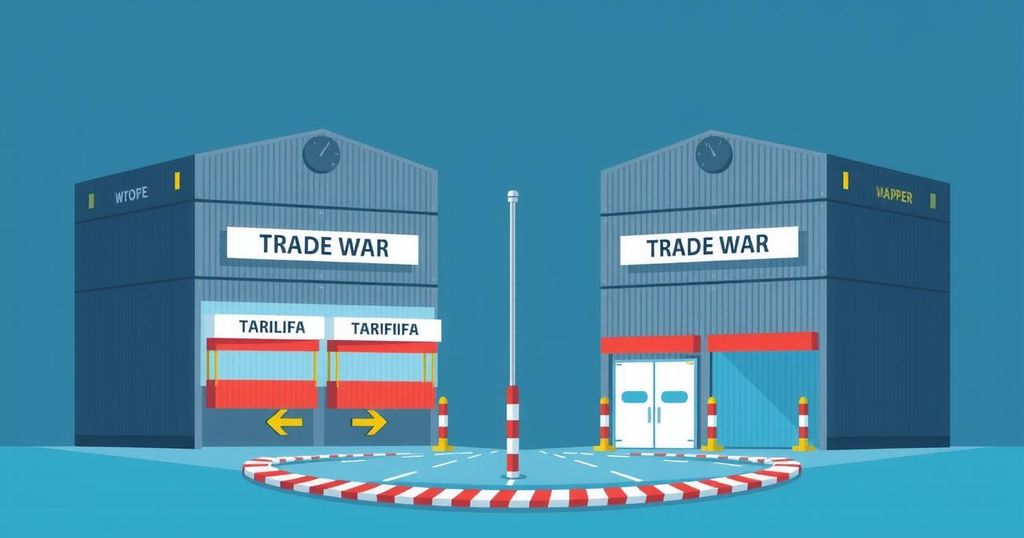The Strained Landscape of U.S.-China Trade Relations Amidst New Tariffs
The intensifying U.S.-China trade war under President Trump is significantly impacting manufacturers. New tariffs are tightening profit margins, leading to reduced orders and layoffs. Many companies are unable to afford requested price cuts, and government support already seems less available due to financial constraints. The outcome of this situation remains uncertain as businesses adapt to survive under these pressures.
In the current climate of U.S.-China relations, the trade war under President Donald Trump has intensified its impact on numerous businesses. Trump implemented a 10% tariff on approximately $400 billion of Chinese exports, with additional tariffs expected to follow. The present circumstances for Chinese suppliers and their American counterparts are more dire than during the previous trade conflicts, primarily due to already strained profit margins and a lack of financial assistance from local Chinese governments.
Chinese manufacturers face worsening conditions, as low-end producers are operating with precariously thin margins, making it challenging to accommodate price reductions requested by U.S. customers. A rise in wages by 2-5% alongside increasing raw material costs has put additional pressure on manufacturers. For instance, Liz Picarazzi, CEO of Citibin, indicated that the burdensome tariffs have made operations in China unsustainable for her business.
Recent negotiation trends reveal U.S. clients demanding price reductions of 10%, yet many manufacturers can only afford discounts between 3% and 7%. Jonathan Chitayat noted that major U.S. companies are advocating for substantial cuts, which many suppliers struggle to meet. In response to the precarious market, some Chinese suppliers now request upfront payments to mitigate risks associated with the tariff environment.
Economists predict potential job losses in China’s manufacturing sector, as rising tariffs burden the industry further. The economic instability has prompted some businesses to close or downsize, with He-Ling Shi highlighting concerns over job cuts. Research has correlated tariff increases with diminished profit margins and significant job losses, with an estimated 3.5 million jobs lost during the previous trade war.
Analysts remain cautious in forecasting the repercussions of the current trade conflict, although there are expectations for government support for local industries. However, this support may be constrained by local governments’ financial challenges. According to Professor Shi, many local authorities are struggling with heavy debts and a declining property market, which limits their capacity to assist manufacturers as they did previously.
Beijing’s position suggests that exporters should consider diversifying markets and tapping into China’s vast domestic consumer base. However, efficacy in this strategy is diminished amid surplus production and weak domestic demand. As businesses adapt, Picarazzi highlighted the challenges of relocating manufacturing back to the U.S., ultimately leading her to explore options in Vietnam instead.
In conclusion, the escalating trade tensions between the United States and China have produced troubling financial consequences for manufacturers. With increased tariffs, diminishing profit margins, and uncertain government support, many companies are reassessing their operational strategies to survive what could be a protracted economic dilemma. The impact weighs heavily on both sides, posing significant challenges to businesses and consumers alike.
The intensification of the U.S.-China trade war has imposed severe financial strains on manufacturers, as tariffs disrupt previously established pricing structures and threaten the viability of many businesses. The inability of low-end producers to absorb costs while facing pressure from U.S. clients for price reductions is leading to deeper economic repercussions. Concerns about job losses and diminished support from local governments underscore the precarious balance of international trade relations, suggesting that significant adjustments will be needed for companies to navigate this evolving landscape.
Original Source: economictimes.indiatimes.com








Post Comment